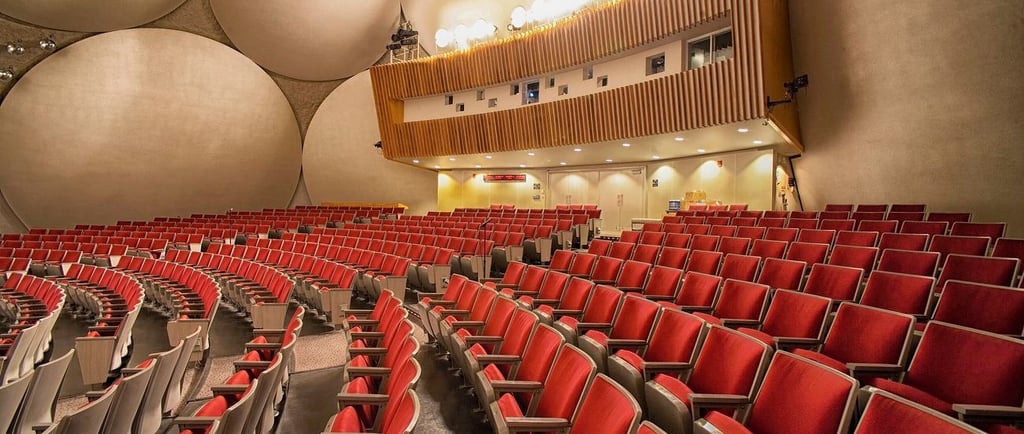Theatre Productions and Stage Plays: A Comparative Look at Demand in India, the United Kingdom, and America
Explore the contrasting demand for theatre in India, the UK, and the US, where India's rich traditions, rooted in Bharata Muni's Natya Shastra, offer a unique cultural backdrop. Learn how Western countries sustain vibrant theatre industries through government support, audience engagement, and accessibility. Discover the opportunities and challenges in reviving Indian theatre's mainstream appeal.
THEATRE
Ram Manjjonaath
11/9/20244 min read


The art of theatre has been a timeless medium for storytelling across the world, yet the demand and cultural significance of theatre vary greatly across countries. India’s theatrical traditions are deeply rooted in ancient philosophies and art forms, while the United Kingdom and the United States have developed robust commercial theatre cultures. This article explores the demand for theatre productions and stage plays in India, with special attention to the legacy of Bharata Muni’s Natya Shastra, and contrasts it with the theatre landscapes of the United Kingdom and the United States.
Theatre in India: A Rich Legacy with a Niche Market
India’s theatre scene has unique historical foundations, deeply embedded in Bharata Muni’s Natya Shastra, the ancient Sanskrit treatise on the performing arts. Written between 200 BCE and 200 CE, the Natya Shastra established the principles of drama, dance, music, and storytelling as both artistic and spiritual practices. This foundational text influenced India’s classical and folk theatre forms, like Kathakali, Bharatanatyam, Yakshagana, and Jatra, which are still practiced today. However, the contemporary demand for theatre as a mainstream entertainment form remains relatively niche.
1. Influence of Natya Shastra on Theatre Practices
The Natya Shastra describes drama as a medium to educate and uplift audiences through rasa (emotional flavors) and bhava (moods). While the treatise continues to influence classical forms, India’s urban theatre scene has developed into a smaller, modern market. In cities like Mumbai, Delhi, and Bengaluru, institutions like Prithvi Theatre, NCPA and Rangashankara stage plays in English, Hindi, and regional languages. However, these productions appeal to a limited audience and must compete with cinema and digital platforms.
2. Regional Theatre’s Stronghold
In Maharashtra, Bengal, and Kerala, regional theatre forms inspired by Natya Shastra principles remain culturally significant. Plays in Marathi and Bengali, for instance, attract dedicated audiences who value the emotional and cultural resonance of traditional storytelling. National festivals, such as the NSD Theatre Festival by the National School of Drama, keep these traditions alive and provide opportunities for new voices in Indian theatre, reflecting the continued, if specialized, appreciation for theatre as outlined by Bharata Muni.
3. Funding and Government Support
Although the Natya Shastra celebrates theatre as a pillar of cultural identity, modern Indian theatre artists often struggle with funding. While the government provides some grants, they are limited, and many productions rely on private sponsorship. This financial constraint limits the reach and frequency of productions, confining the theatre’s appeal to smaller, loyal audiences rather than the mainstream.
Theatre in the United Kingdom: A Flourishing Industry
The United Kingdom boasts one of the most dynamic theatre scenes in the world, with a legacy that includes everything from medieval mystery plays to the works of Shakespeare. Today, London’s West End stands as a global center for theatre.
1. A Mainstream Cultural Activity
Theatre in the UK enjoys substantial demand, with the West End attracting millions of visitors annually. Productions range from classical adaptations to contemporary dramas, making theatre accessible to both local and international audiences. Touring companies also bring productions to smaller cities and towns, allowing regional audiences to engage with live theatre.
2. Governmental and Institutional Support
The UK government and cultural institutions provide significant funding and subsidies to theatres, making it possible for experimental, avant-garde, and classical works to thrive. Educational curricula reinforce an appreciation for theatre, exposing students to works like Hamlet and Macbeth that solidify theatre’s cultural value. Initiatives like National Theatre Live further expand audience access by broadcasting performances in cinemas, exemplifying the UK’s commitment to accessible theatre.
3. Diversity and Accessibility
From mainstream musicals to experimental productions, the UK’s theatre scene offers a diverse array of shows that cater to varied tastes. Theatre is generally accessible due to discounts for students and seniors, enabling wider engagement. This accessibility, alongside institutional support, contributes to a steady demand for theatre.
Theatre in the United States: A Broadway-Driven Phenomenon
The United States is known for its highly commercialized theatre industry, centered in Broadway, New York. While Broadway is the heart of American theatre, the country also boasts a strong network of regional theatres, especially in cities like Chicago, San Francisco, and Seattle.
1. Broadway’s Global Appeal
Broadway serves as a commercial powerhouse that draws millions of tourists and theatre enthusiasts annually. Productions like Hamilton and The Lion King achieve both artistic and financial success, establishing Broadway as an integral part of American culture.
2. The Role of Regional Theatre
Regional theatres, supported by the American Regional Theatre Movement, help decentralize theatre and bring it to audiences across the nation. Non-profit companies like the Steppenwolf Theatre in Chicago contribute to this thriving scene by producing innovative works that appeal to a broad audience.
3. Government and Private Support
Though Broadway largely operates on commercial funding, regional and non-profit theatres receive government support and private donations. Ticket discounts and outreach initiatives further make theatre accessible to diverse demographics, ensuring its popularity across age and income groups.
Comparative Analysis
1. Audience Demand
UK and U.S.: Theatre is widely appreciated, with established audiences for a variety of productions. West End and Broadway serve as iconic hubs that attract tourists and local audiences alike.
India: While regional theatre has a loyal audience, mainstream demand remains limited due to the dominance of film and streaming. The influence of the Natya Shastra keeps traditional forms respected, but the modern theatre market is niche.
2. Cultural and Governmental Support
UK: Heavy cultural and governmental backing, along with a robust educational system, maintains theatre’s popularity.
U.S.: The mix of government and private funding supports regional and non-profit theatres. Broadway’s commercial success also contributes to a thriving theatre culture.
India: Despite the cultural foundation provided by Natya Shastra, limited funding and public awareness hinder theatre’s growth.
3. Accessibility and Affordability
UK and U.S.: Theatre is generally accessible to wider audiences due to subsidies, regional productions, and discount schemes.
India: Urban theatre’s high ticket prices and a limited audience base reduce accessibility. Regional forms influenced by Natya Shastra still attract dedicated followers but lack the mainstream support seen in Western markets.
Conclusion
India’s theatre scene has a unique cultural legacy, enriched by the philosophical and artistic principles of Bharata Muni’s Natya Shastra, which continues to influence classical and regional theatre. In contrast, the UK and the U.S. have established theatre as a mainstream cultural activity, supported by significant investment and audience demand. India’s theatre market could benefit from increased funding, educational initiatives, and efforts to make theatre more accessible. By looking to the UK and U.S., India could further build upon the foundations laid by the Natya Shastra, bringing theatre into a more prominent position within contemporary Indian culture.
